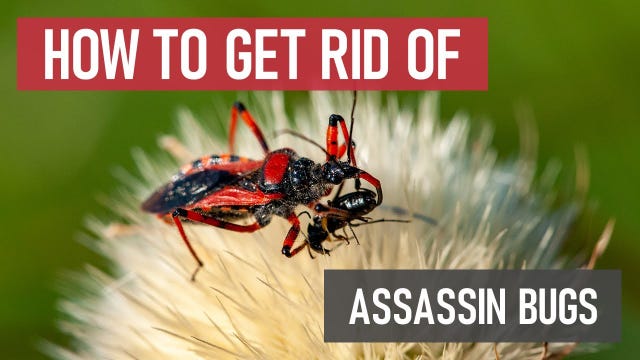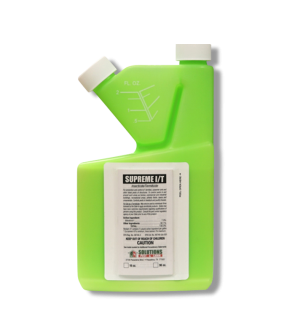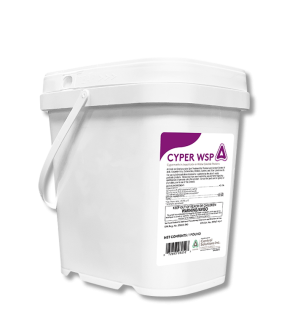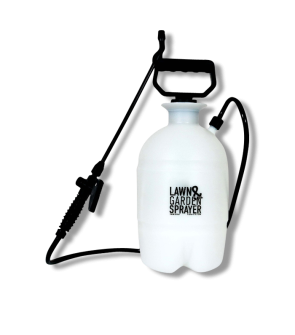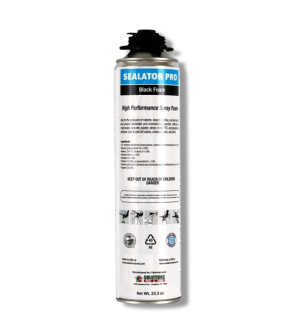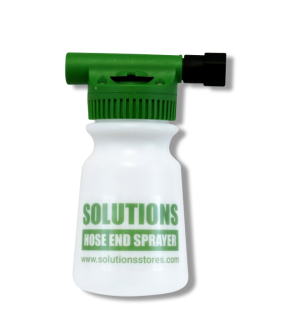Gain access to personalized product screening, the best pricing, rewards, and more!
Most Effective Products
Assassin Bug Control: How to Get Rid of Assassin Bugs
This page is a general assassin bugs control guide. Using the products and methods suggested, you will get control of assassin bugs. Follow this guide and use the recommended products, and we guarantee 100% control over assassin bugs.
Assassin bugs are insects falling in the Reduviidae family that have steadily become a growing issue within homes and businesses. While many assassin bugs are beneficial because they prey on garden pests, some species can pose serious health risks to people and pets.
Assassin bugs are the most common term used for members of this family, certain subfamiles have their own names. For example, the kissing bug, wheel bugs, ambush bugs, thread-legged bugs, and grass assassin bug. Each pest's has their own distinct behaviors and risks. It's crucial to remember that all kissing bugs are assassin bugs, but not all assassin bugs are kissing bugs.
Due to their ability to bite, invade homes, and spread diseases, assassin bugs should be taken seriously as a pest threat, especially in warmer climates and rural areas. This DIY guide will help you understand the risks, identify pests, and explore effective, safe assassin bug control methods to protect your family and home.
Identification
Before treatment, you must be sure that the pest you are dealing with is an assassin bug and not some other insect. Misidentification can lead to using the wrong treatment methods and products, which can be a large waste of time and money. Since there are numerous species in the United States we will focus on some common characteristics to know assassin bugs look like:

- Assassin bugs are medium-sized pests, with adults measuring between 1/2 to 1 1/2 inches long. Their bodies are slender and elongated, often appearing oval in shape. Depending on the species, their color ranges from dark black, gray, or brown, but some stand out with red, orange, or yellow tones.
- Their wings fold flat across the back and typically form a faint X pattern, while the sides of the abdomen may extend beyond the wing edges, giving them a broader midsection.
- One of their most distinguishing traits is the head. It's narrow and noticeably long, with a small neck just behind the eyes. From the head extends a straight elongated mouthpart (proboscis), which tucks neatly into a groove under the body when not in use. This mouthpart is designed to pierce prey and draw out fluids from their insect victims.
- They also have six long, thin legs with the front pair often slighly thickened to grasp and hold prey. Assassin bugs also have long, jointed antennae.
- Assassin bug nymphs are wingless, slender, and often more colorful than the adults. They will also carry the same mouthpart used to pierce and suck fluids from prey.
- Indoors, you're more likely dealing with kissing bugs and milkweed assassin bugs. Kissing bugs are about 1 inch long and generally dark-colored with colorful orange markings around their body. Milkweed assassin bugs measure about 16 to 18 mm long and are known to overwinter in homes.
- Outdoors, you're probably contending with wheel bugs and ambush bugs. Ambush Bugs have shorter heads than most assassin bugs and front legs that look similar to praying mantis legs. Wheel bugs are the biggest assassin bugs, measuring about 1 1/2 inches long. They have a cog-wheel-shaped crest on their body, which is how they got their name.
If you cannot determine the exact species of assassin bug you are dealing with, then take a picture of the pest or place the pest in a sealable plastic container. Show either samples online or in-person at one of our store locations for proper pest identification to better recommend appropriate treatment plans.
Inspection
Once you have confirmed that you are dealing with assassin bugs, you can move on to inspection. During this phase, you will need to find out where the assassin bugs are located, how they may be entering your structure, and the places they are infesting. This will help you in determining where to focus your treatment application.

Where To Inspect
Assassin bugs can be found on nearly any type of terrestrial plant, including gardens, landscapes, row crops, ornamental trees, and shrubs. Certain species can be seen on wildflowers.
Because they are predators, they tend to inhabit areas rich in insect activity such as trees, grassy fields, gardens, and crop areas where they can hunt bees, flies, caterpillars, aphid, leafhoppers, and beetle eggs or larvae.
Often they will move towards areas where their prey insect can be found, such as under or around porches and decks, between rocks, under cement, rocks, wood piles, doghouses, and in other areas.
While they primarily stay outdoors, assassin bugs can sometimes enter homes through open windows, doors, screen tears, or unsealed cracks in walls.
What To Look For
Most species of assassin bugs are active during the warmer months of the year, especially from spring through fall.
Outdoors, their presence is usually indicated by the occasional sighting of the adults or nymphs on plants, often waiting motionless for prey.
Bites from assassin bugs often appear as small clusters or patches on the face, commonly around the mouth. These bites can be painless at first, but the skin may swell, turn red, or develop raised areas that resemble hives. Some bites can become itchy over time.
You may notice these pests near mattresses, pillows, or bed frames, as well as noticing tiny bloodstains on bedding, which occur when the pest is feeding or accidently crushed.
Treatment
Once you have confirmed assassin bug activity, it is time to begin treatment. Remember to read all product labels, follow the application instructions on these labels, and wear personal protective equipment (PPE) to stay safe.
Treatment for assassin bugs should start outdoors by killing off the insect population present to remove the assassin bugs' food source.
For this, we recommend a broadcast treatment and a perimeter treatment of Supreme IT. To control assassin bugs themselves, we suggest using Cyper WSP Insecticide.
Insecticides containing Bifenthrin, Cypermethrin, and other pyrethroids are most effective against assassin bugs.
Step 1: Broadcast Supreme IT

Measure the square footage of the treatment area to determine how much Supreme IT to use. Find this square footage by measuring the treatment areas' length and width in feet and multiplying them together (length X width = square footage).
A general application will use 1 fl. oz. of Supreme IT per 1 gallon of water per 1,000 sq. ft.
This product will need to be mixed with water in a handheld pump sprayer, backpack sprayer, or hose-end sprayer. For faster coverage or larger area's we suggest using a hose-end sprayer.
Broadcast the mixed solution uniformly across your lawn and ornamentals. Adjust your sprayer to a fan or cone-spray pattern until the top and bottom of leaves are wet, but not to the point of runoff.
Be sure to treat the listed areas where you have noticed assassin bugs as this is where the majority of the prey population is most likely suspected. By treating these areas, you can reduce the pest's prey insect population, making it less appealing for assassin bugs.
Do not allow people or pets to enter the treated area until the spray has completely dried.
Step 2: Perimeter and Indoor Treatment with Cyper WSP Insecticide
Cyper WSP Insecticide is an effective cypermethrin-based water-soluble packet designed for broad-spectrum control of flying and crawling pests in residential, commercial, and industrial settings.
To apply Cyper WSP Insecticide, mix it with water in a handheld pump or backpack sprayer.
Because water-soluble packets readily dissolve in the presence of moisture, do not allow them to get wet before adding to the spray tank. Wear dry gloves when handling the water-soluble packets.
Start by filling your spray tank with half the amount of water. Drop the unopened packet into the water. Allow the packet to fully dissolve, which should take 1 to 2 minutes. Once the packet is fully dissolved, fill the rest of the tank with the remaining half of the water.
For a perimeter application against assassin bugs, use 1 packet of Cyper WSP Insecticide per 1 to 5 gallons of water per 800 to 1,600 sq. ft.
Apply the solution as a coarse, low-pressure spray for indoor and outdoor treatment.
Treat the outside of the home as a perimeter spray. To make applications easier, clear away debris and leaf litter near the foundation, prune any vegetation or branches that are in contact with the building, and pull back rocks, thick mulch, or other areas where pests could hide along the foundation.
To create a perimeter treatment, spray 2 to 3 feet up the structure and 6 to 10 feet wide around and adjacent to the building on the ground, including nearby vegetation. Also, spray window frames, door frames, and cracks and crevices in the foundation.
Next, move on to indoor treatment.
To get rid of assassin bugs indoors, apply 1 packet of Cyper WSP Insecticide with 1 gallon of water.
Apply around doors and windows and similar areas where assassin bugs may be found or where they can enter your home. Treat baseboards, storage areas, and other cracks and crevices.
Cyper WSP Insecticide may only be used as a crack-and-crevice or spot treatment for indoor surfaces.
Do not allow pets and people access to treated areas until the sprays have dried.
Prevention
After the assassin bugs have been successfully controlled, preventative measures must be taken to ensure they don't reinfest.
- Start by sealing entry points such as gaps around doors, windows, and foundations with caulk or spray foam, such as the Solutions Sealator Pro Black Foam. Repair or replace torn screens and fill cracks and crevices where assassin bugs could enter with the appropriate material. Install weatherstripping where needed to further limit indoor access.
- To keep your property assassin-bug free, you can trim back vegetation and branches that touch the house, remove leaf litter, rocks, wood piles, and thick mulch near the foundation, and maintain lawns and garden areas to minimize dense cover for this pest and its prey.
- Another good way to keep assassin bugs away is to turn the lights off at night, especially on patios or outside in the yard. If you must keep the lights on, you will have more luck with yellow bug bulbs.
- Storing firewood, compost, and other garden materials away from your house, and keeping bedding and linens well-protected, also helps reduce the chances of assassin bugs entering and nesting indoors.
- Apply Supreme IT every 3 months as a broadcast spray and Cyper WSP Insecticide every 2 to 3 months around the perimeter of your home and indoors to ensure that assassin bugs will be kept away from your property.
Key Takeaways
What are Assassin Bugs?
- Assassin bugs often infest gardens and lawns around the home with a large insect population, as small insects are their primary food source.
How To Get Rid of Assassin Bugs
- Reduce the insect population with a broadcast treatment of Supreme IT, and then conduct a perimeter barrier treatment and indoor application of Cyper WSP Insecticide to keep insects and assassin bugs away.
Preventing Assassin Bug Reinfestation
- Exclusion and sealing off any possible entry points is the best way to prevent and control assassin bugs. Regularly check your home for any possible entry points, fix them, and maintain a debris-free yard; this will ensure insects have no harborage areas. Reapply Supreme IT and Cyper WSP Insecticide to prevent assassin bugs.






